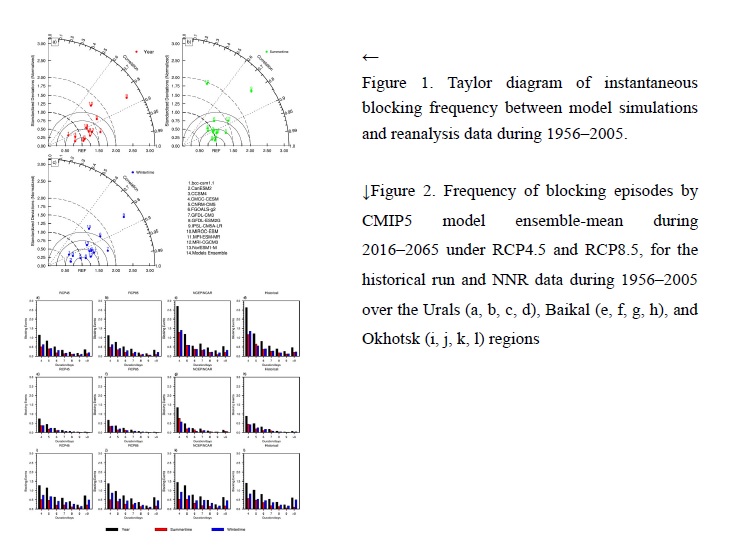Graphical Abstract
Li, Y., P. L. Ye, J. Feng, Y. Lu, J. H. Wang, and Z. X. Pu, 2017: Simulation and projection of blocking highs in key regions of the Eurasia by CMIP5 models. J. Meteor. Soc. Japan, 95, 147-165.
https://doi.org/10.2151/jmsj.2017-008
Graphical Abstract with highlights
Highlights:
- Taylor diagrams are used to quantify the correspondence between modeled and observed instantaneous blocking frequency in Eurasia (Fig. 1), revealing that most of the CMIP5 models simulate instantaneous blocking frequency better in wintertime than in summertime.
- Blocking episode frequency is underestimated by most of the 13 CMIP5 models in the Urals and Baikal regions, especially for short-duration blocking episodes (4–5 days). The simulations are superior in wintertime in the Urals and Baikal regions. Modeled blocking episode frequency is close to the observed value in summertime but overestimated in wintertime in Okhotsk. The possible cause for the unsatisfying performance of the models is investigated, and it is shown that the five models that are better at simulating blocking may be superior because of their resolution and prior ability to simulate ENSO.
- The multi-model ensemble mean frequency of blocking episodes clearly decreases in the whole year in the Urals and Baikal regions (especially blocking episodes with short duration) and increases a little in summertime of the Okhotsk region in the first half of the 21st century. The model ensemble-mean frequency of blocking episodes with long duration (more than 9 days) decreases by ∼40% in the Urals region but increases by no more than 5% in Okhotsk (Fig. 2).







